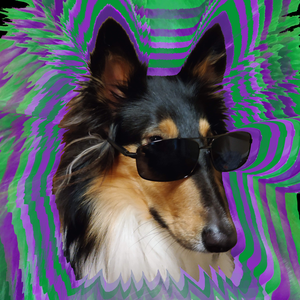Hi all
A higher nozzle diameter has the benefit of being able to print faster due to to bigger layer width. There is a tradeoff, you’ll have to lower print speed and/or raise temperature to maintain proper layer adhesion. That means that there is an optimal nozzle size for a given print speed/temperature combination. You also don’t want temperature too high because it will burn/degrade your filament.
In my experience layer adhesion is quite poor with a nozzle of 0.8mm and it also prevents you from printing finer details (gear teeth for example). The tradeoff versus a 0.4mm nozzle doesn’t seem worth it especially if you print overnight.
What are your experiences?
There is no such thing as an ideal diameter: It depends on what you’re trying to do.
That said, sounds like you might like .6 mm based on what you said.
Layer adhesion should be fine with any. In theory, it should be better the thicker you go, but whenever you change nozzles, you need to readjust everything.
Personally, I just stick with .4 almost always because I’m lazy and it’s an OK enough balance of detail and speed.
. 6 is my favorite size
A lot of people really seem to like that one, little faster than .4 but better detail than the extra thicc stuff.
This is like asking “what’s your favorite color?”
Every print and every project is different. At work I used to use .8 because I wanted speed above all else since the models were all functional and tended to be quite large. I think I might have tried a 1.0 but didn’t like the results.
At home I’ve settled for .4 just because I usually start prints in the afternoon and print overnight. An extra 20 or 30% print time isn’t a deal breaker if it’s for personal projects.
I change nozzles depending on the project.
0.4 and 0.5 are nice for smaller parts with fine details. But for mineatures / small figures, I tend to 0.3 or even 0.2 nozzles. 0.1 only for exceptional small and detailled works, since these nozzles constantly tend to clogging. And then there are taller parts which have to be strong, like shelf brackets or vases. That’s where my 0.8 and even 1.0 mm nozzles do shine.
Last, but not least: You don’t need a high-flow hotend for wider nozzles. Any hotend will do (tested with an old Ender2), as long as you adjust speed and temperature accordingly. Some trial and error is the key.
Side note: You don’t need to level the bed after each nozzle change. Keeping this in mind saves quite some time and effort.
Depends on what you’re printing.
I love the look of 1mm and it’s excellent for quick prototypes. Otherwise I pretty much stick to 0.4. I have multiple printers so I have different nozzles on different printers
I like .6 for speed but there’s a lot of content out there saying how great .6 is and how you can’t really tell it apart. You absolutely can and arachne isn’t perfect either. If it’s a part that needs more strength I’ll go .6 but for anything else I’ll swap in my .4.
Almost always 0.4 (sometimes 0.4 stainless). It is the biggest one that still gives me acceptable tolerances, and printing time is easier to deal with than imprecise parts.
Changing the nozzle and recalibrating feels like too much of a hassle for me, so I didn’t experiment much though.
What is your use case for stainless nozzles? For abrasives I use Hardened steel nozzles just to not lose even more thermal conductivity.
Food grade stuff. Cookie cutters, spares for cat drinking fountain. I guess hardened could’ve worked too. Printed with ColorFabb HT, so it can just go to dishwasher.
Removed by mod
I haven’t experienced layer adhesion dropping with higher nozzle sizes. Are you setting volumetric flow rate limits? If you don’t limit the volumetric flow rate, and try to run higher nozzle diameters at the same speed as smaller ones (especially with greater layer heights), then this could cause that issue, because you’re extruding material that isn’t adequately melted. But in general, nozzle diameter and layer adhesion shouldn’t be closely related.
Minimum feature size, on the other hand, is definitely related, and is indeed the main reason you might want a small nozzle or low layer height.
I have a Revo installed on my printer, so changing nozzles is easy. Since the nozzles are standardized and are the same height, I don’t need to adjust the Z height.
If layer adhesion is a problem at larger sizes, check the line width, it should be larger than the nozzle size.




